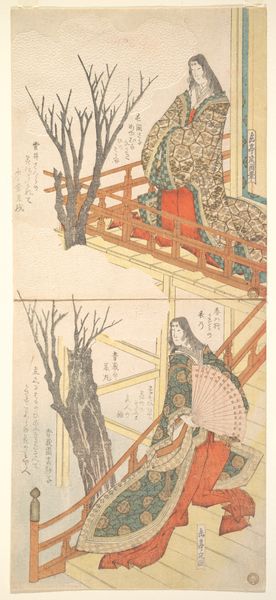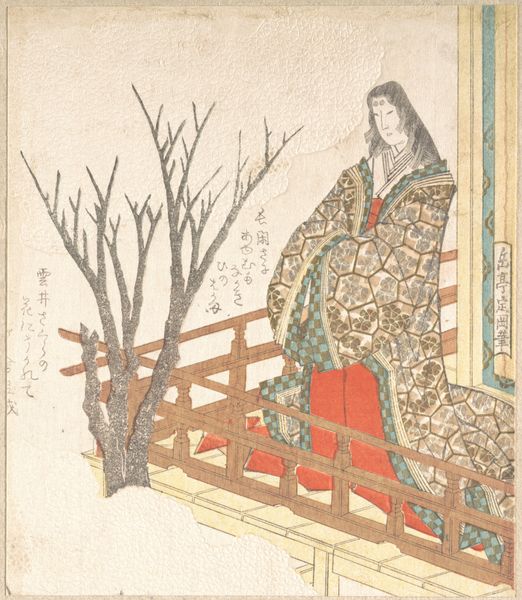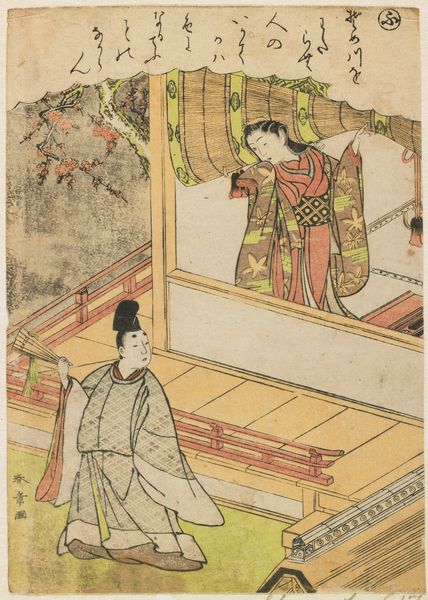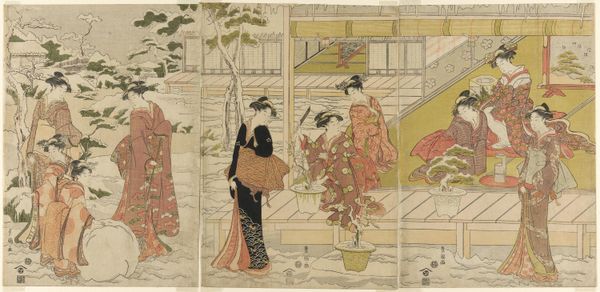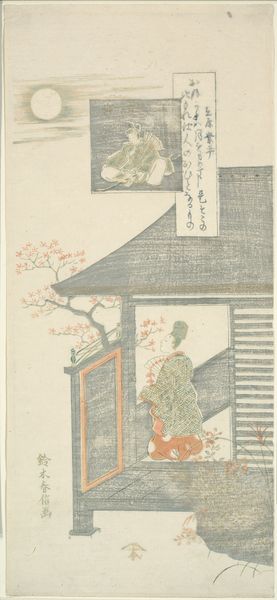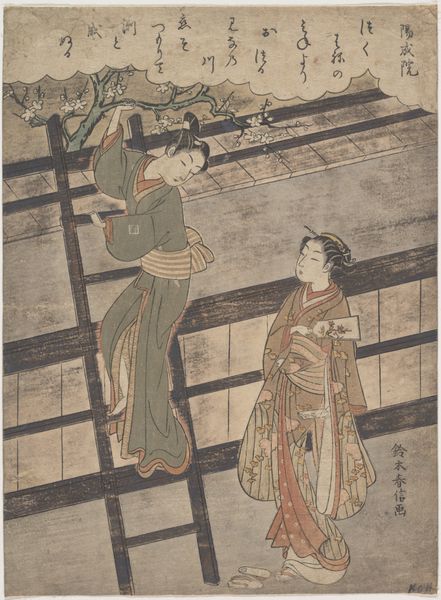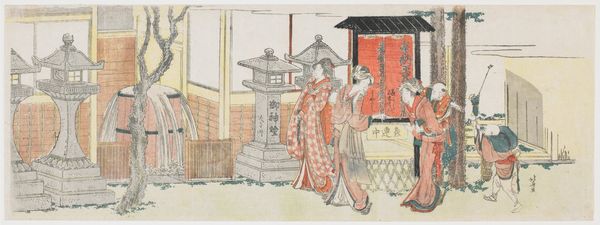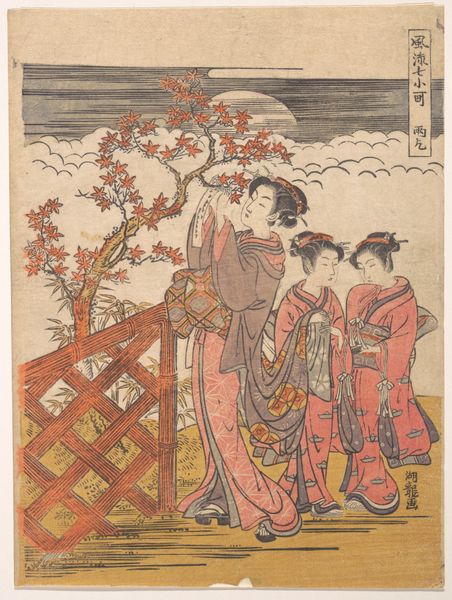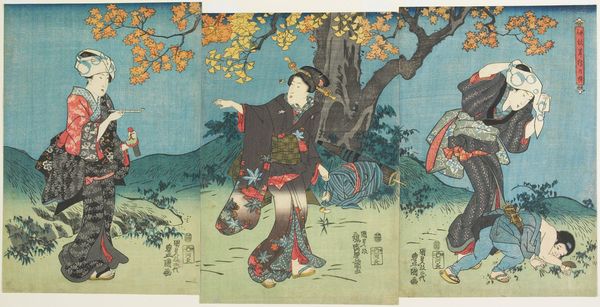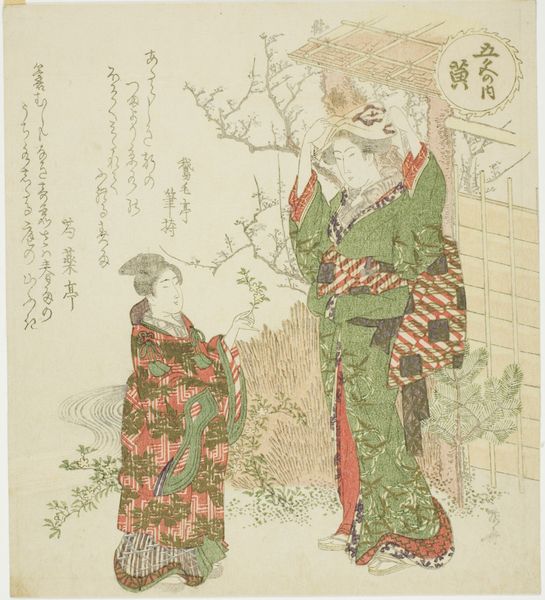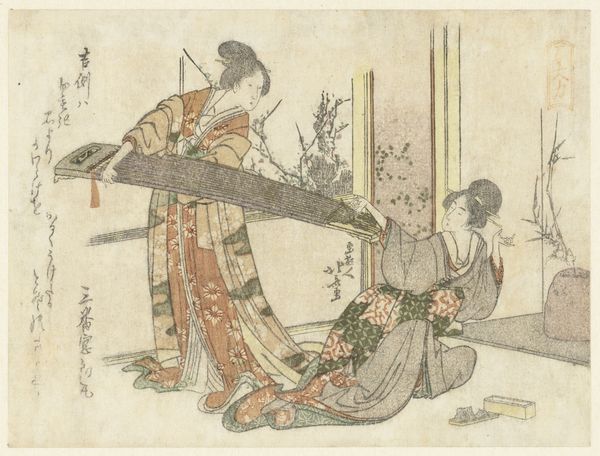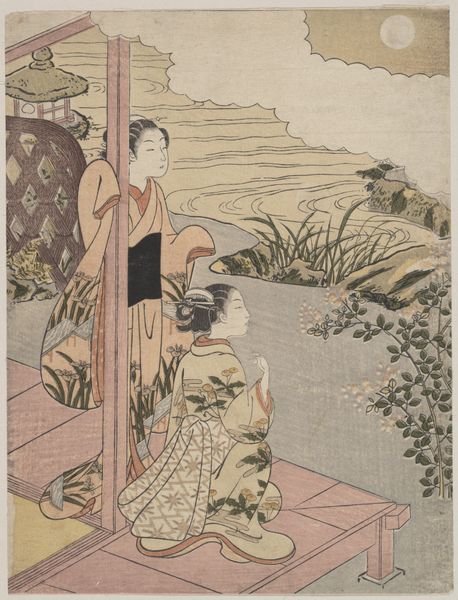
Two Court Ladies Admiring Cherry Blossoms c. 19th century
0:00
0:00
print, woodblock-print
#
portrait
# print
#
asian-art
#
ukiyo-e
#
figuration
#
woodblock-print
#
genre-painting
Dimensions: 42.2 × 19.4 cm (16 5/8 × 7 5/8 in.)
Copyright: Public Domain
Curator: I'm immediately struck by the elegant stillness of this print. The cool tones and precise lines create such a refined and delicate scene. Editor: Indeed. This is "Two Court Ladies Admiring Cherry Blossoms," a woodblock print by Yashima Gakutei, created around the 19th century. The medium itself, the woodblock print, is crucial here. Consider the labour involved in carving each color layer, the careful registration, the specific types of wood used for their distinct grains. Curator: I can only imagine. The composition itself reinforces that sense of careful labor. Two panels vertically stacked, each presenting a court lady on a balcony, perhaps in different moments or places within the same compound? I want to understand how these elite women navigate their world. What does it mean for their identities to be framed this way? Editor: Their opulent robes certainly denote privilege, which inevitably shapes how they interact and move through society. Each gesture, each fold of fabric, conveys social status, particularly within the rigid structures of the Japanese court. Consider how they may be viewed through the lens of the male gaze? Curator: Good point, but consider too that these women may have commissioned this art piece for other elite women, positioning themselves as sophisticated consumers of culture. What does this commission process look like and what's Gakutei's role in shaping elite self-representation? Editor: The inclusion of the blossoming cherry tree suggests broader social and cultural significance beyond their status as elite consumers. Ukiyo-e prints frequently featured depictions of the natural world and ephemeral pleasures as subjects in and of themselves, and as background elements in portraits. Here, the motif likely signals not only spring, but also the transient nature of beauty and life. Curator: Right! Thinking about the process involved to even create an image like this, considering labor divisions in production and cultural ideals related to women in power opens up broader understanding to materiality's role within the Japanese society in 19th century. Editor: Absolutely. It invites critical questions about the power dynamics and social contexts surrounding art and its creation, helping to examine social representations throughout Japanese history. Curator: Well, examining the means and social context of artistic production has given me a deeper understanding of its place in history. Editor: And considering historical narratives reveals art’s potential for shaping social discourse—it helps connect with social and political forces.
Comments
No comments
Be the first to comment and join the conversation on the ultimate creative platform.
